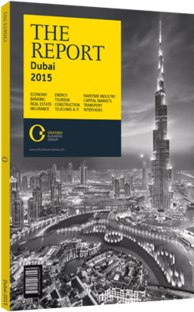Dubai harnessing mobile phone technology to improve public health care
When Apple released its new operating system iOS8 in September 2014, smartphone and tablet users were presented with a new tool called Healthkit. The dashboard pulls together apps designed to help people on the move monitor a range of health and lifestyle data including vital signs, calorie intake and exercise records. Data collected can then be stored on the iCloud interface, and the technology allows select results, such as blood pressure readings, to be shared with physicians if day-to-day monitoring is required. With the launch, Apple recognised the importance users attached to this data and the potential for growth in telehealth services. The latent potential of these telehealth services has been recognised for some time in the UAE, and access to the technology is growing. Indeed, the latest figures from Nielsen released in August 2014 showed that smartphone penetration had reached 78% across the country.
In 2011 the Dubai telecoms operator Du produced a white paper drawing attention to the potential for mobile phone technology to help spread public health messages, to encourage self-monitoring by patients of their lifestyle, and to facilitate remote monitoring and diagnosis of patient symptoms, including analysis of medical imaging using video technology. The paper suggested that remote monitoring, combined with self-monitoring, could be particularly effective for patients with cardio-vascular conditions, diabetes or obesity. Illustrating the gravity of the situation, DHA records show 28% of all deaths in Dubai in 2012 were attributed to cardio-vascular conditions.
Pitfalls
However, there are pitfalls when it comes to implementation, particularly with regard to remote monitoring of patients and diagnostic practices. Patients may not all be comfortable with using the technology, and medical staff would also need to be trained to work with the platform. Moreover, public and private health service providers would need more robust data and software management systems in place to ensure the confidentiality of patient records.
Human Resources
A potential advantage of remote diagnostics is that it could enable health care providers to access global expertise to analyse symptoms and medical imagery. These remote services could be particularly useful when access to highly qualified specialists is limited in a particular health authority or geographical location. One example of this service is tele-radiology, where the results of Xrays and scans can be shown to experts anywhere in the world for diagnosis. Dubai Health Authority (DHA) has been training Emirati nationals in radiology in a special residency programme lasting two years and currently has six people enrolled on the course. The aim is to increase the number of trained radiologists in the UAE. However, the scale of the workload is revealed in DHA’s annual report for 2012, which stated that private health providers conducted 976,727 radiological scans in one year. To help meet the need for these services, one company, Golden Hawk Imaging and Diagnostics, has opened two private centres offering scanning services. Its parent company, MULK Holdings, plans to expand to create a chain of 12 centres in GCC countries. “The increasing dependence on technology means that more people are required to analyse the reports,” Dr Yasmeen Ul Mulk, a female imaging and foetal medicine expert, told local media. “Also, with growing investment in the health sector in UAE, more radiologists are needed.”
Regulation
Although telemedicine offers substantial potential in terms of efficiency, cost savings and access to expertise, it can also present a challenge for regulators. “Telemedicine is expanding, and people are always looking at an easier way of consultation without compromising on standards,” Dr Layla Mohamed Al Marzouqi, the acting director of DHA Health Regulation Department, told OBG, “We have been approached for a licence by one company. We have not given them a licence yet, as we are working with the Ministry of Health to bring in a new law. Once that law is in place, we will be able to proceed.”
You have reached the limit of premium articles you can view for free.
Choose from the options below to purchase print or digital editions of our Reports. You can also purchase a website subscription giving you unlimited access to all of our Reports online for 12 months.
If you have already purchased this Report or have a website subscription, please login to continue.

